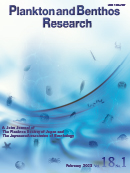Volume 18, Issue 1
Displaying 1-8 of 8 articles from this issue
- |<
- <
- 1
- >
- >|
Original Papers
-
2023 Volume 18 Issue 1 Pages 1-12
Published: February 28, 2023
Released on J-STAGE: March 02, 2023
Download PDF (8614K) -
2023 Volume 18 Issue 1 Pages 13-20
Published: February 28, 2023
Released on J-STAGE: March 02, 2023
Download PDF (1251K) -
2023 Volume 18 Issue 1 Pages 21-33
Published: February 28, 2023
Released on J-STAGE: March 02, 2023
Download PDF (1262K) -
2023 Volume 18 Issue 1 Pages 34-46
Published: February 28, 2023
Released on J-STAGE: March 02, 2023
Download PDF (1302K)
Notes
-
2023 Volume 18 Issue 1 Pages 47-51
Published: February 28, 2023
Released on J-STAGE: March 02, 2023
Download PDF (1242K) -
2023 Volume 18 Issue 1 Pages 52-54
Published: February 28, 2023
Released on J-STAGE: March 02, 2023
Download PDF (6661K) -
2023 Volume 18 Issue 1 Pages 55-59
Published: February 28, 2023
Released on J-STAGE: March 02, 2023
Download PDF (480K) -
2023 Volume 18 Issue 1 Pages 60-62
Published: February 28, 2023
Released on J-STAGE: March 02, 2023
Download PDF (1238K)
- |<
- <
- 1
- >
- >|
